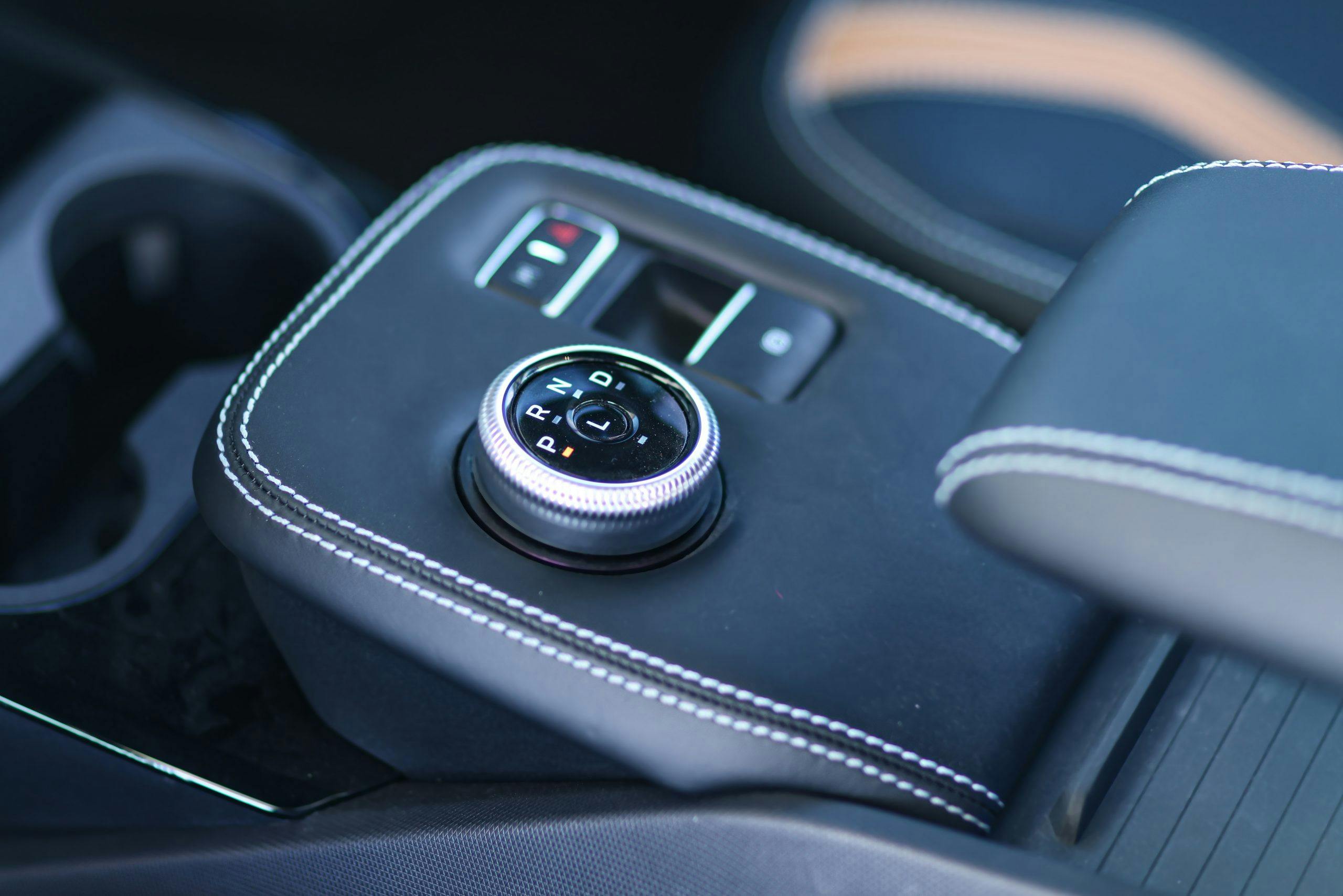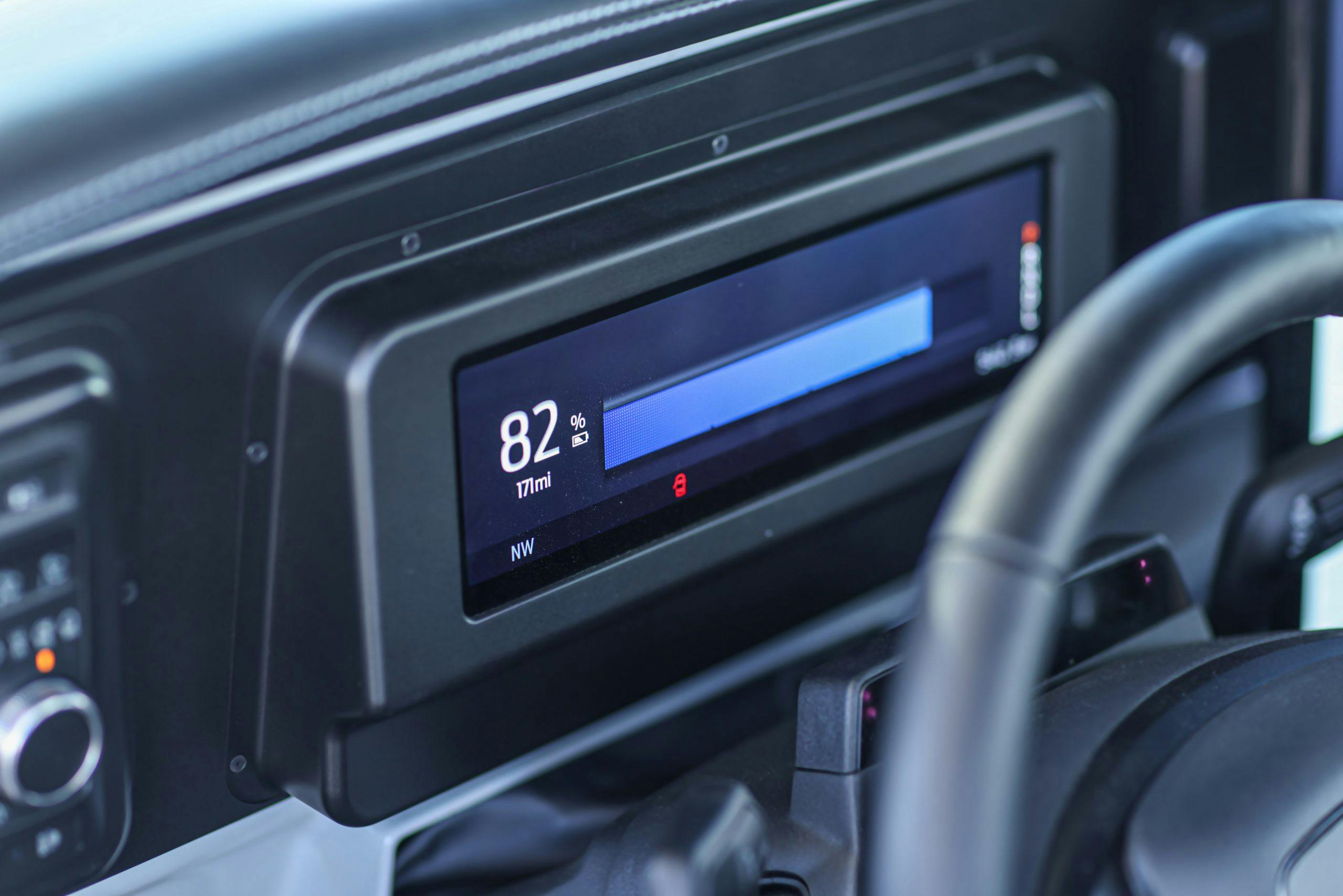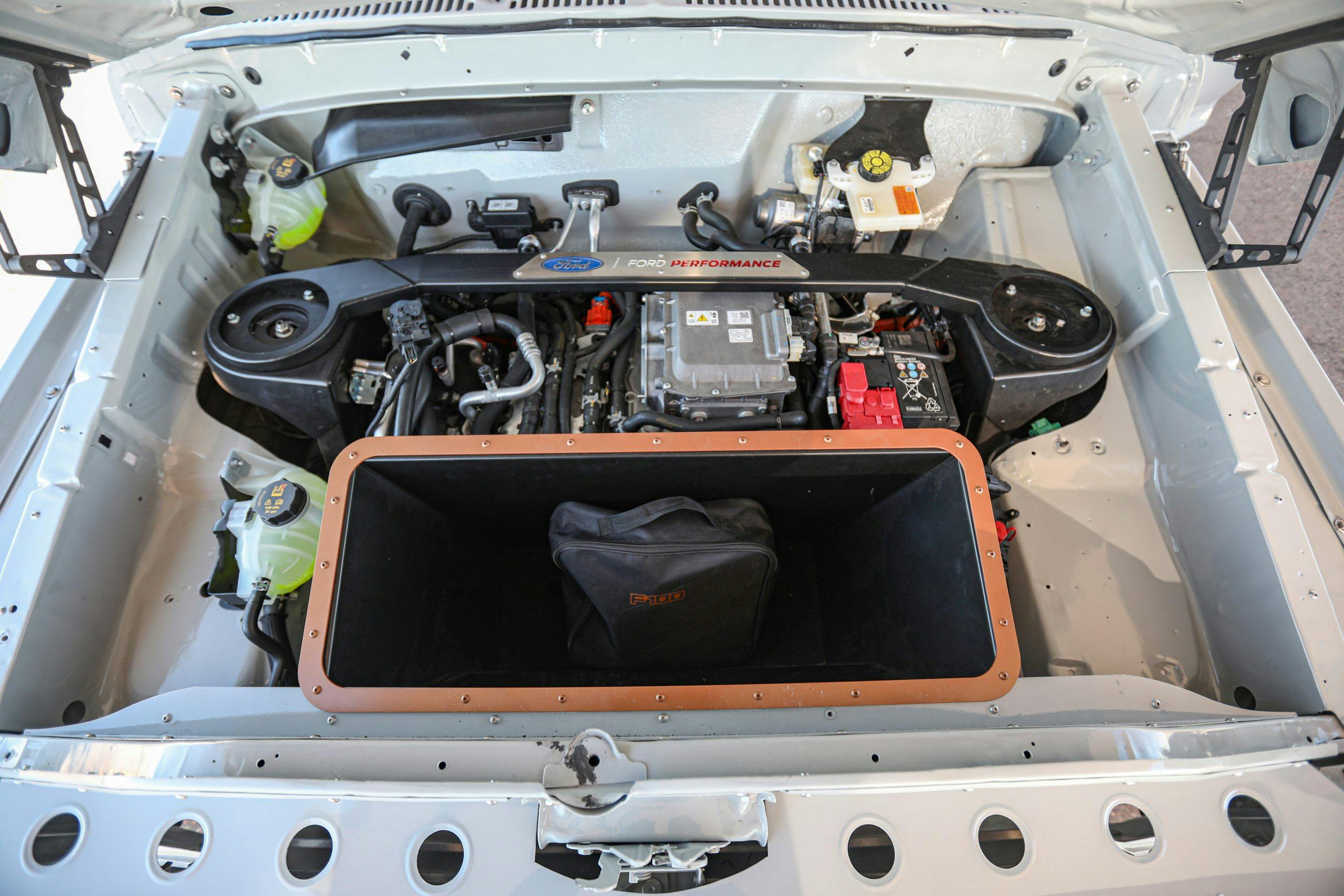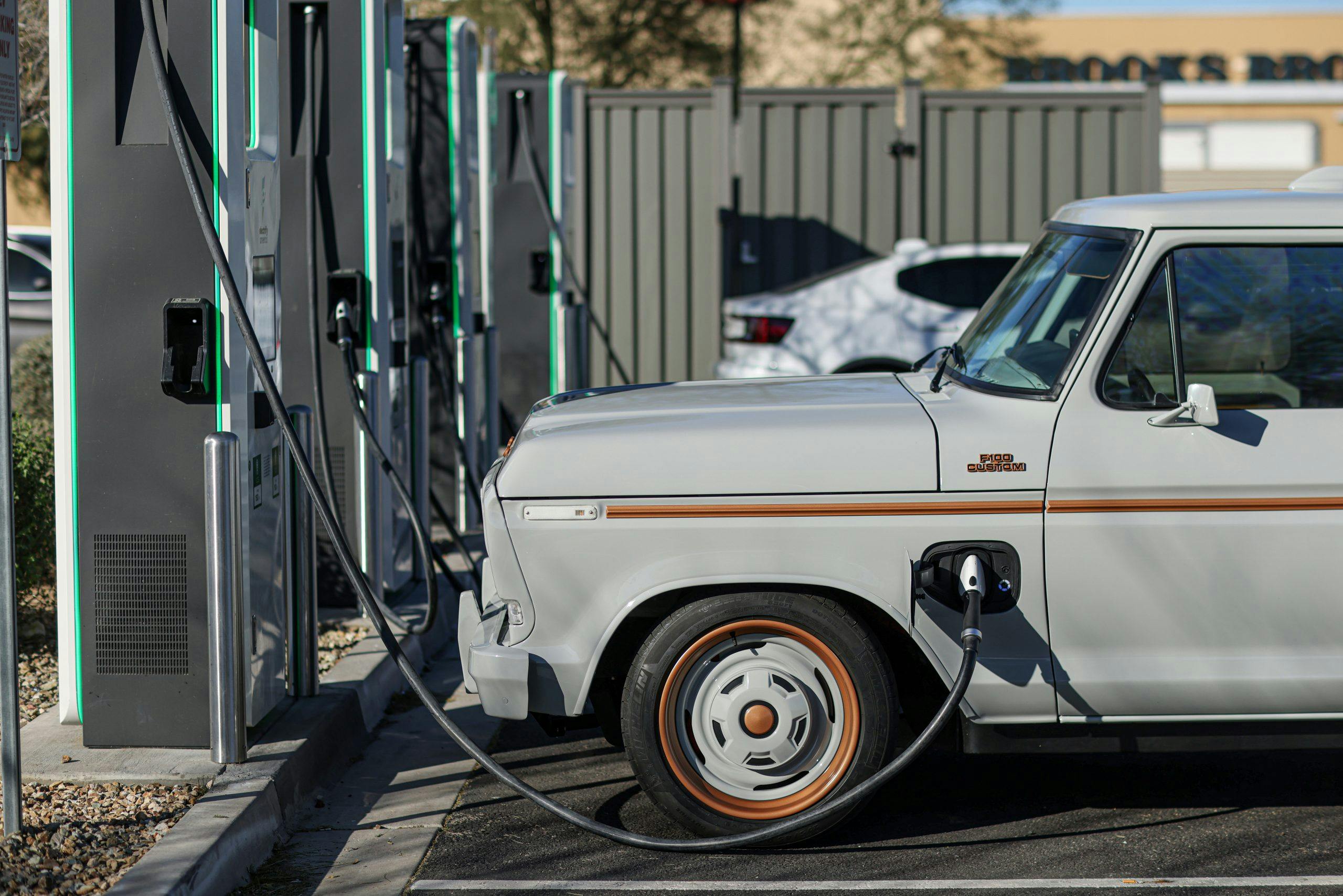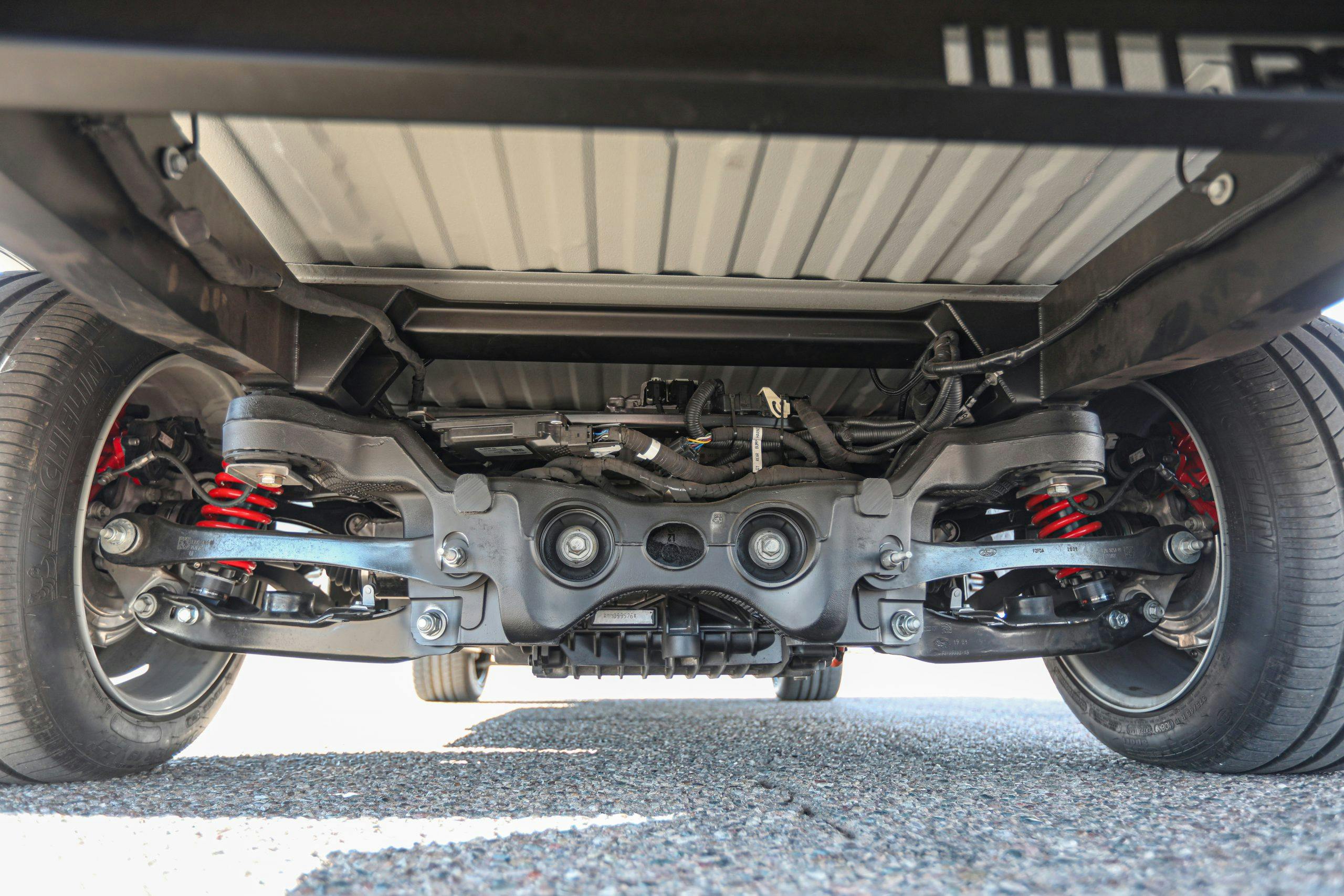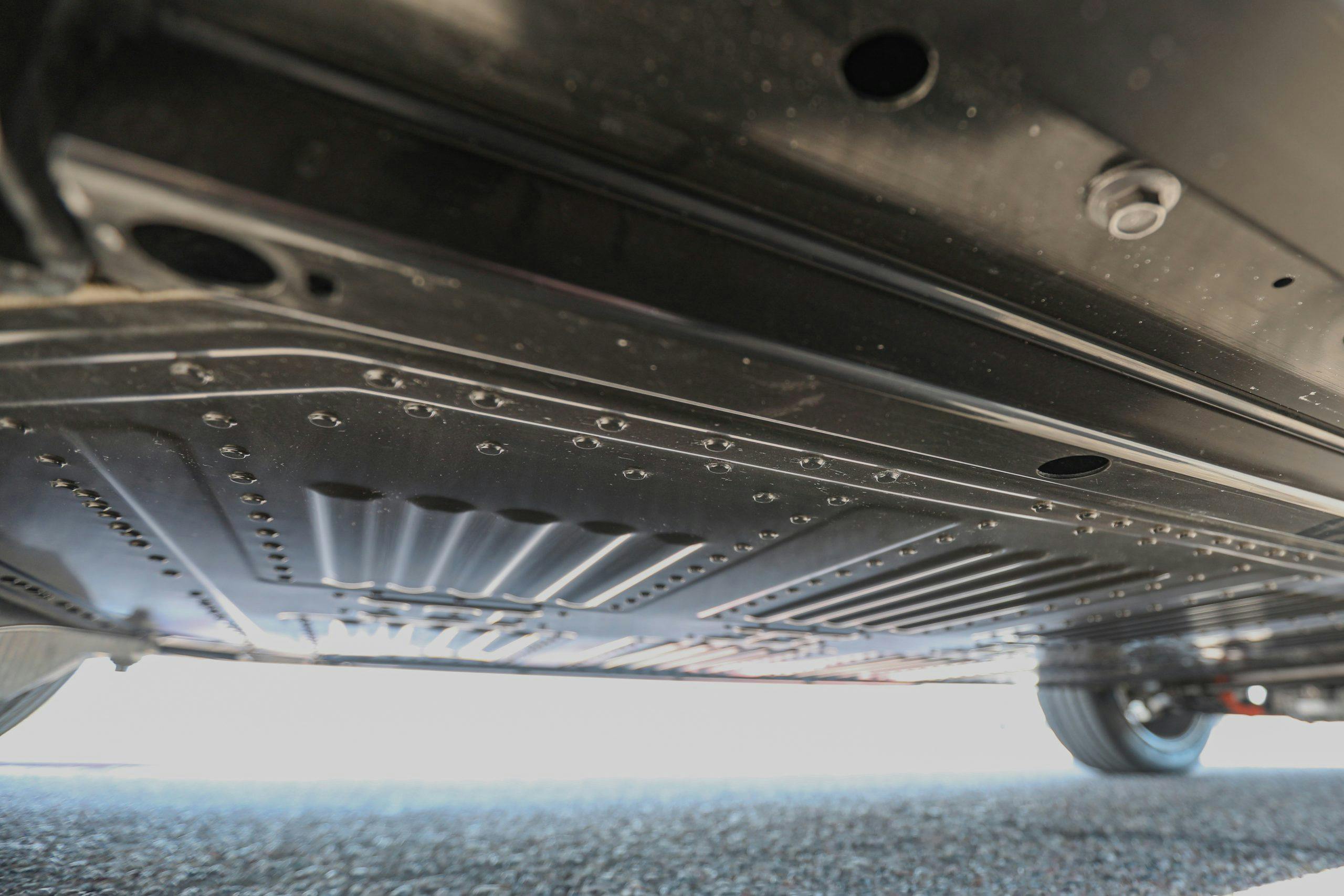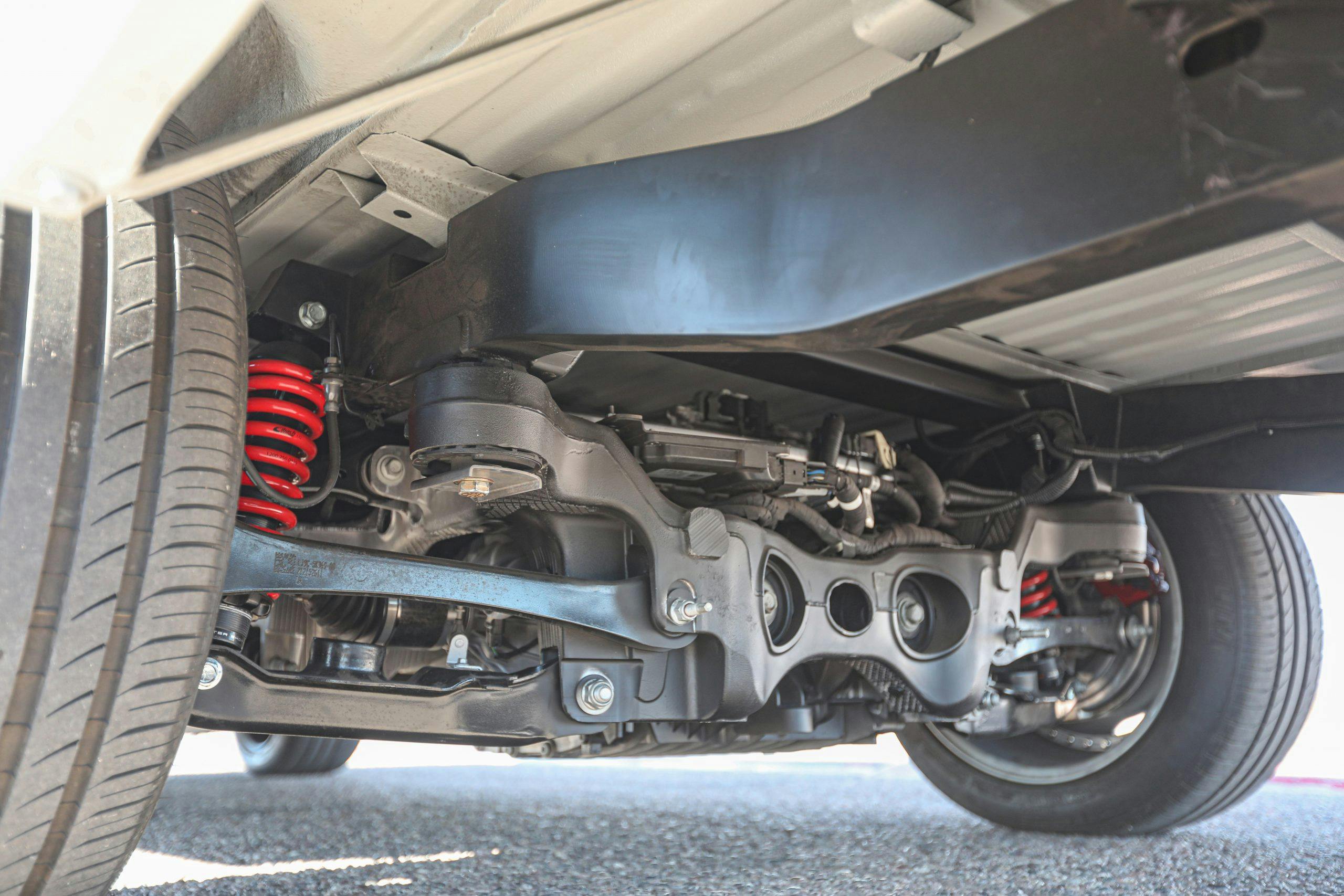Exclusive: We track Ford’s electric ’70s pickup, and it’s fantastic

Ever since Ford debuted its electric-powered 1978 F100 concept at SEMA 2021, I’ve been itching to get behind the wheel. Considering it is scheduled to make a number of auto show appearances throughout 2022, I figured the odds were slim I’d get the chance any time soon, if at all. However, we were both at the same place at the same time in Scottsdale, Arizona, so Ford let me be the first person outside the Blue Oval to take this reinvented pickup to Radford Racing School‘s West Track and see how it handles.

Before I could drive the F100 on the track, I had to get the F100 to the track. Though it’s a one-off concept, the truck is street-legal, registered, and insured, so that was part was no problem. Sliding behind the wheel was not as simple. Since this is a regular-cab truck, there’s not a whole lot of legroom for a tall driver and the modern steering column didn’t help. In my ideal driving position, the steering wheel fell just in line with the digital dashboard, blocking the speedometer. Adjusting the steering wheel by tilting it lower revealed the speedometer, but placed the wheel nearly between my knees. I split the difference and decided that peeking around the wheel was an acceptable tradeoff.
Shifting the F100 into Drive is just like operating the Mustang Mach-E SUV, and, from a driver’s perspective, that’s not hyperbole. This electrified pickup is basically a Mustang Mach-E drivetrain and suspension swapped into an F100. Of course, the engineering behind that combination is not that simple. Integrating a modern vehicle’s infotainment, dash, and steering column into a classic vehicle is not easy, let alone an electric vehicle’s controller and its associated software. Pat McHue and the team from MLe Racecars helped Ford with the conversion. As its name suggests, MLe Racecars has built several electric race cars, including the Chevrolet eCOPO Camaro and Ford’s Cobra Jet 1400. Having the backing of major OEMs is a huge bonus that the average car builder lacks, but a conversion like this is still far more difficult than your average engine swap. As McHue and his crew and the team at Ford Performance had done all the hard work, all I had to do was drive.
Heading south on Arizona Loop 101, the F100 drove like any modern electric vehicle. It accelerated briskly and quietly up to highway speed and certainly didn’t behave like a typical truck of this era. This pickup could have experienced 40+ years of poor roads, hard work, and bad owners, but its previous life has been erased by the thorough rebuild. As previously noted, the ergonomics were a bit strange, but beyond that, the pickup felt very modern thanks to the dash and center touchscreen, each lifted from a Mustang Mach-E, along with modern seats wrapped in leather by MDM Upholstery. With the truck’s nearly silent drivetrain and responsive steering, and the blessing of smooth pavement, the most obvious reminder that this wasn’t a new vehicle was wind noise. Fifty years ago, designers just weren’t as concerned with aerodynamics as they are today, and the exposed drip rails bear witness.
Charging the Eluminator F100 is just like charging a Model S or a Polestar 2 or a Chevy Bolt. We found an Electrify America charging station just across the highway from our destination and plugged into 150kW to get the batteries nearly topped off. Just like the Mustang Mach-E, charging is very quick until the battery reaches 80 percent. Past that mark, electrons slow to a trickle to prolong battery life. With an 82-percent charge and an indicated 172 miles of range, I was off to the track.
I had the better part of a morning to take the F100 on several laps at Radford’s West Track, and so I spent the first couple getting a feel for the pickup’s handling. At 5152 pounds, this truck was no featherweight, but it was deceptively quick and the low center of gravity gave it an athletic feel. Ford’s Eluminator crate motor produces 281 horsepower and 317 lb-ft of torque, and this pickup is powered by two of them, one on each axle. Like the Mustang Mach-E GT Performance Edition on which this restomod is based, the twin motors generate exactly double the torque of a single unit (634 lb-ft) and not quite double the power (480 hp). I drove in “Unbridled” mode, which would give me all the motors had to offer.
Roadster Shop is responsible for the sturdy frame that incorporates Mustang Mach-E front and rear suspension assemblies. The company typically builds chassis for modernized classic cars and trucks, but this F100 build was a bit different. The big, aluminum castings from the Mach-E bolt in place and operate just as they would in their factory application, except that instead of relying on the complicated stampings of a unibody, they are supported by tall, boxed framerails and burly strut towers.
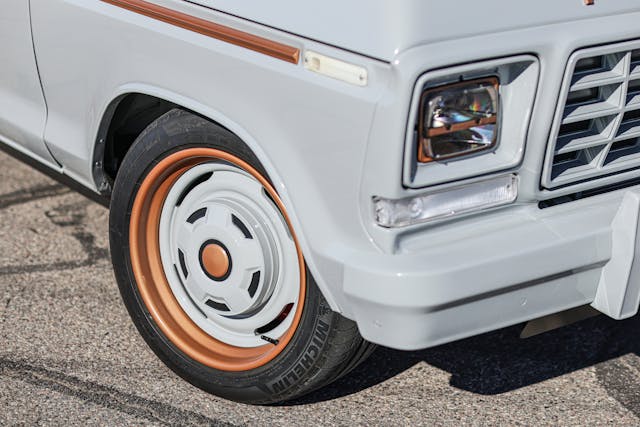
Michelin Latitude Sport 275/45R19 tires mounted to 19×10-inch Forgeline billet aluminum three-piece wheels provided a ton of grip, and together with the Mach-E suspension geometry made for very predictable handling. The truck pulls nicely out of corners with strong 40 to 70 mph acceleration, but beyond the 70-mph mark, it began to lose momentum. The weight was apparent in fast corners, but the flat cornering and all-wheel-drive pull kept the rear from coming around, even when goaded. After a few spirited laps, the brakes became toasty but retained their feel well. Of course, pushing the truck much harder would find the limits of both tire grip and brake capacity, but I didn’t enjoy the convenience of a track-side charger or a trailer’s worth of fresh Michelins. Arm-chair customers without a nearby racetrack can rest assured that this F100 will happily leave any contemporary pickup in its dust—and stop in time for the next light.
This pickup represents a lot of work, much of it outside the realm of the average hot-rodder—at least for now. Ford’s Eluminator crate motor is the first step in making the electric-conversion process easier, but motor controllers and batteries are still major hurdles to overcome. Ford should soon have a solution for the former issue. We can’t wait to see what creative customers will assemble with these new puzzle pieces.

